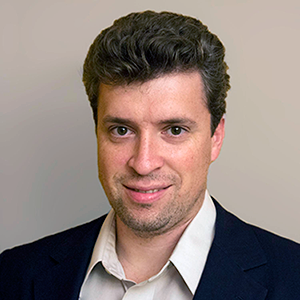How One Design Engineer Adheres to High Standards for His Customers
JKL Technologies’ Lance Feldenkreiss on the development and future of standards in the AV industry.
 Lance Feldenkreiss, CTS-D
Lance Feldenkreiss, CTS-D JKL Technologies
When Lance Feldenkreiss, CTS®-D, joined JKL Technologies in 2015, his role as Lead Design Engineer for an AV department that had only recently been formed provided an exciting opportunity to embrace the merging worlds of IT and AV.
The IT-centric company, which had a successful business centered around network operations, had a few months earlier made the decision to expand into AV, leveraging its existing customers from IT and following what it saw as a natural progression of the two industries.
“We basically started an AV division from scratch, which provided a great opportunity to bring my previous experience as a director of engineering in a larger, more corporate structure to a smaller and more focused team that needed to get up and running fast,” says Feldenkreiss.
He recognized right from the start that getting CTS-certified would add credence to the department, and, along with other team members, he studied for and received first his CTS certification and then the CTS-D.
“Having the CTS-D shows that you have advanced knowledge and you’re well-versed in the industry terms and standards. Its value translates directly from us to the customer,” he says.
Feldenkreiss describes his role at JKL as overseeing all engineering operations, from initial design to helping the sales team put together a bill of materials and onward to the operation side after a project is secured, overseeing CAD development and entire projects from an engineering perspective.
His main challenge and motivation is “providing a good user and customer experience, from start to finish,” which involves a precise and meaningful needs analysis, careful planning, close attention to budget, and seeing that the design accurately reflects the client’s requirements. A system’s operation after installation feeds back to the success of subsequent projects, he notes.
“The constant learning and improving is a real driving factor for me. I like to make things the best they can possibly be every day.”
Using industry standards is another way to deliver an excellent customer experience, he believes. And having that assurance that the service he is providing is relevant and adheres to established industry specifications is paramount.
“We use a lot of standards here at JKL,” he says. “Initially, it was great for me as a tool to help develop the AV division from scratch. I didn’t have to come up with, for example, the foundation of the project management. The ANSI/INFOCOMM 2M-2010 Standard Guide for Audiovisual Systems Design and Coordination Processes had that with its checklists and guidance for the industry and integrators. We also used the J-STD 710 Audio, Video and Control Architectural Drawing Symbols standard for AutoCAD, which built the library so we didn’t have to do it ourselves from the ground up.
“I see standards as extremely important,” he continues. “They lay the groundwork for what should be expected and provide a framework so you have something to build off of and references for the work you’re doing. For me, as a designer working with customers, if something is questioned, we have ANSI-accredited standards that back up our specifications. The math is there for us, it’s accredited, and it’s been reviewed by industry experts. There is so much value to it and it makes everything so much easier when there’s a point of reference.”
His passion for standards development extends to revising the Audiovisual Systems Energy Management Standard. Originally published in 2012, the revised standard is expected to be completed in 2019.
“We reviewed the original standard and came up with a pretty good outline for a draft, and we’re currently rewriting it from how the industry was seven years ago to where it is now and essentially beyond,” explains Feldenkreiss. “We’re trying to future proof it as well as lower the barriers to adoption of the standard.”
He explains that, as an integrator, a lot of the existing standard plays out of his hands, as it requires the customer to then implement a good energy management strategy.
“We’re working to lower the barriers, so people can implement the low-hanging fruit of the standard, with different tiers of the standard: a good, better, best approach. In other words, the lowest barrier is good in terms of, for example, automation and data. But there’s a next level, which requires more in terms of customer and service. And then the best is going to be all-encompassing, the ideal of what we’d want to see,” he says, noting that he uses parts of the existing standard in his system designs, such as automation and trying to limit the number of hours equipment such as LCDs and projectors are operating.
“I definitely think that the revised standard will be more widely adopted, in general. I see that as the way forward for standards,” he says, adding that he’d like to see even more standards in the AV industry. “Having AVIXA standards is great for the AV industry. but I think there should be about 10 to 15 more. Though obviously that requires a lot of time and volunteers!”
Find out more about AV standards and how you can get involved in the development process.





